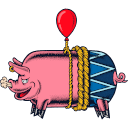.jpg/900px-F_for_Fake_(1973_poster).jpg)
F for Fake
F for Fake (, "Truths and lies"; , "Fraud") is a 1973 docudrama film co-written, directed by, and starring Orson Welles who worked on the film alongside François Reichenbach, Oja Kodar, and Gary Graver. Initially released in 1974, it focuses on Elmyr de Hory's recounting of his career as a professional art forger; de Hory's story serves as the backdrop for a meandering investigation of the natures of authorship and authenticity, as well as the basis of the value of art. Far from serving as a traditional documentary on de Hory, the film also incorporates Welles's companion Oja Kodar, hoax biographer Clifford Irving and Orson Welles as himself. F for Fake is sometimes considered an example of a film essay.
Plot
The film opens with Welles performing magic tricks for some children while Kodar watches nearby. Welles quotes Robert-Houdin to the effect that a magician is just an actor. Welles promises that for the next hour everything in the film will be based on solid fact. Kodar is then shown strolling around a street in a miniskirt while being ogled by the men on the street. Welles reveals the footage is taken from another experiment about girl-watching, where Kodar deliberately drew attention to herself and the men were unaware they were being filmed. Welles says her story will continue later in the film, and then narrates the story of Elmyr de Hory, an art forger who sold many fake paintings to museums and collectors all over the world. De Hory is shown throwing a dinner party at his home in Ibiza and being feted by European society, although he dances around the question of whether he is guilty or not. One of those filmed is Clifford Irving, who had published a biography of de Hory called Fake, and was later revealed to have been the forger of a fake "authorized biography" of Howard Hughes. Welles discusses the irony of Irving commenting on de Hory's forgery, while having committed a version of it himself (Welles states his belief that Irving must have been in the process of working on the hoax at the time he was filmed for the de Hory project). Irving and de Hory tell about the art dealers who were fooled by the forgeries, and Welles considers the question whether this means art dealers and appraisers are fake also.
More details
| author | Oja Kodar Orson Welles |
|---|---|
| director | Orson Welles |
| editor | Dominique Engerer Gary Graver Marie-Sophie Dubus |
| genre | drama |
| keywords | art dealer art market artistic legacy build cathedral of chartres chartres cathedral citizen kane claim dinner party even fake news first film ibiza ireland jean eugène robert-houdin magic trick paint picasso robert-houdin the war of the worlds |
| musicBy | Michel Legrand |
| producer | Dominique Antoine François Reichenbach Richard Drewett |
| publisher | Planfilm Specialty Films |
| recordedAt | Germany Paris |
| theme | avant-garde and experimental docudrama documentary |

.jpg/200px-F_for_Fake_(1973_poster).jpg)